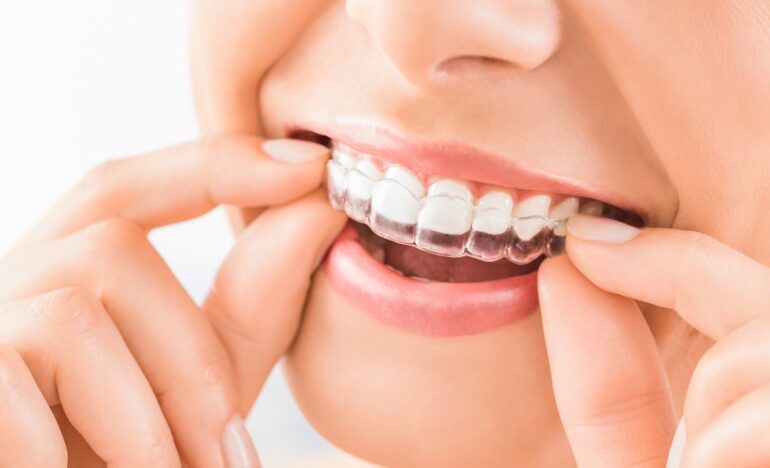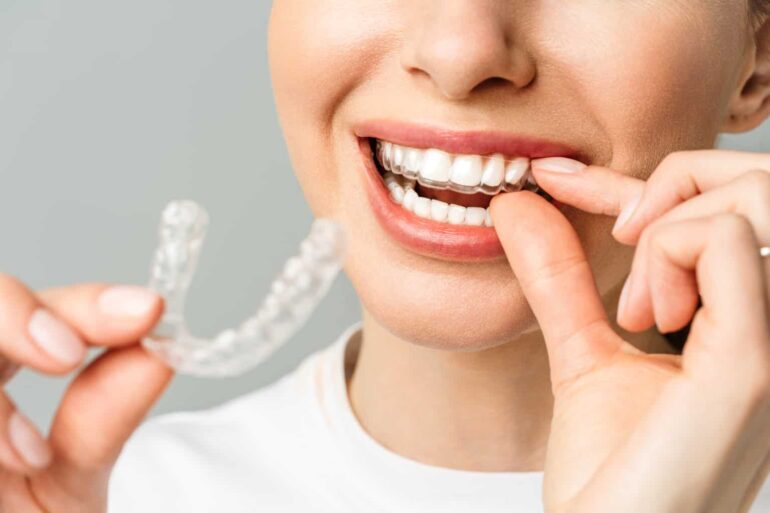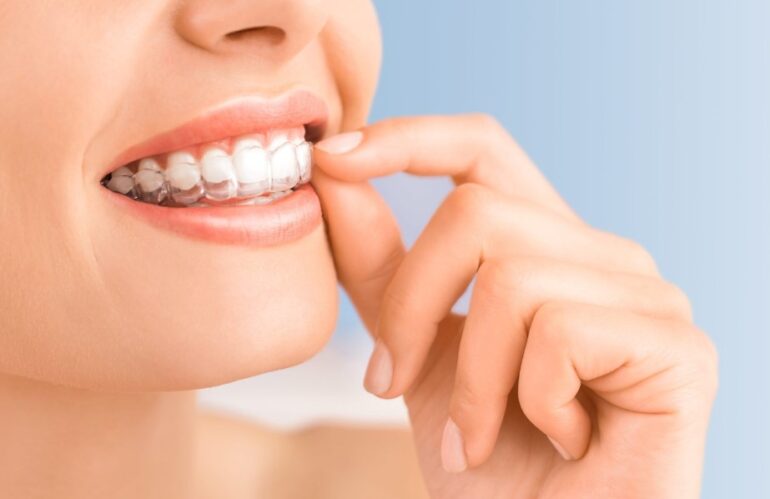In recent years, there has been a growing demand for dental treatments that are less invasive and more comfortable for children. One such innovation is the use of invisible aligners to straighten teeth.
Understanding the basics of invisible aligners and the benefits they offer can help parents make an informed decision about their child’s orthodontic care.
In this article, we will explore the ins and outs of invisible aligners for kids, the process of getting them, maintenance and care tips, as well as address common concerns surrounding their use.
What are Invisible Aligners?
Invisible aligners are custom-made, flexible trays that are virtually invisible when worn. Made of smooth, BPA-free plastic, these aligners are designed to gradually shift the teeth into their desired positions over time.
Unlike traditional braces, which use wires and brackets to move teeth, aligners offer a more aesthetically pleasing option for those who are conscious about their appearance during the treatment process.
One of the key advantages of invisible aligners is their transparency. This allows individuals to go about their daily lives without feeling self-conscious about their orthodontic treatment. Whether it’s a professional meeting, a social gathering, or a special occasion, invisible aligners provide the confidence to smile freely without worrying about the appearance of metal braces.
These aligners are particularly popular among teens and adults due to their near-invisible appearance and the flexibility they offer, allowing for removal during eating, drinking, and cleaning. By consulting with a skilled pediatric dentist in Fredericksburg, VA, like the professionals at Junior Smiles of Stafford, parents can explore if invisible aligners are a suitable option for their children.
The expert team at Junior Smiles of Stafford is well-versed in providing comprehensive orthodontic solutions, including invisible aligners, ensuring that young patients receive the most suitable and effective treatment for their individual needs.
How Do Invisible Aligners Work?

Consultation and Assessment
Initially, an orthodontist or a dentist will evaluate the patient’s teeth to determine whether they are a suitable candidate for invisible aligners. This assessment usually involves taking digital scans or impressions of the teeth to understand the extent of misalignment.
Customized Treatment Plan
Based on the assessment, a customized treatment plan is created. Utilizing computer-aided design and computer-aided manufacturing (CAD/CAM) technology, a series of aligners are designed to gradually move the teeth from their initial position to the desired alignment.
Wearing Aligners
Patients wear a set of aligners for about 1-2 weeks, for at least 20 to 22 hours per day, only removing them for eating, drinking anything other than water, and oral hygiene. Each aligner in the series is slightly different to guide the teeth into a new position.
Progressive Movement

As the patient progresses through the series of aligners, teeth are gently and incrementally moved into their correct positions. The orthodontist or dentist will monitor progress through regular check-ups, usually every 6-8 weeks, to ensure the teeth are moving as planned.
Retention
After the active treatment phase is completed, retainers are typically used to maintain the new position of the teeth. These retainers may be similar in appearance to the aligners but are designed to hold the teeth in place rather than move them.
Advantages
Invisible aligners are discreet, comfortable, and removable, making them a popular choice among adults and teens. The clear material makes them less noticeable, and being able to remove them for eating and cleaning is often seen as a significant advantage over traditional braces.
Technology Utilization
Modern technology plays a significant role in the success of invisible aligner treatment.
From 3D imaging to precision planning software, the process is heavily reliant on the latest technological advancements to achieve accurate and desired outcomes.
What are the Benefits of Invisible Aligners for Kids?

When considering orthodontic treatment options for children, invisible aligners offer several advantages worth considering.
Comfort and Convenience
One of the key benefits of invisible aligners is their comfortable design. The absence of metal brackets and wires means that children can avoid the discomfort and irritation commonly associated with traditional braces. Aligners are also removable, allowing kids to eat and drink as usual without restrictions.
Aesthetics and Confidence
Wearing visible braces can sometimes lead to self-consciousness, particularly in social situations. Invisible aligners provide a more aesthetically pleasing alternative, enabling children to maintain their natural smile and boost their confidence throughout the treatment process.
Oral Health Advantages
Another significant advantage of invisible aligners is their impact on oral health. With aligners, children can continue with their regular brushing and flossing routines, as the trays can be easily removed for oral hygiene practices. This reduces the risk of plaque buildup and tooth decay that can occur with traditional braces.
What is the Process of Getting Invisible Aligners for Kids?

Initial Consultation and Assessment
The first step in getting invisible aligners for kids is to schedule an initial consultation with an orthodontist. During this visit, the orthodontist will evaluate the child’s teeth and overall oral health to determine if they are a suitable candidate for aligner treatment.
Customizing the Aligners
If the child is eligible for invisible aligners, the orthodontist will take impressions or use 3D scanning technology to create a digital model of their teeth. This model will then be used to customize a series of aligners, each designed to gradually move the teeth into the desired positions.
The Treatment Plan
Once the custom aligners are ready, the orthodontist will provide the child with a treatment plan. This plan outlines the number of aligners required and the duration of treatment. Typically, children will need to wear the aligners for at least 20-22 hours per day.
How to Maintain and Care for Invisible Aligners

Cleaning and Storing Aligners
Maintaining proper hygiene for invisible aligners is crucial to the success of the treatment. Aligners should be removed before eating or drinking anything other than water to prevent staining. They should be cleaned with a gentle toothbrush and non-abrasive toothpaste to keep them free from bacteria and odor. Aligners should also be stored in their designated case when not being worn.
What to Avoid While Wearing Aligners
While wearing invisible aligners, it is important for children to avoid consuming heavily pigmented foods and beverages such as coffee, red wine, and tomato sauce, as these can stain the aligners. Chewing gum and smoking should also be avoided, as they can damage or discolor the aligners.
How Long Does the Treatment Last?
The duration of treatment with invisible aligners varies depending on the complexity of the case. On average, treatment can range from several months to a couple of years. The orthodontist will provide a more accurate estimate based on the child’s individual needs during the initial consultation.
Conclusion
Invisible aligners offer a less intrusive and more convenient approach to straightening kids’ teeth. With their comfortable design, aesthetic appeal, and oral health advantages, they provide an excellent alternative to traditional braces.
By following proper care guidelines and addressing any concerns with their orthodontist, parents can support their child’s journey to a healthier, straighter smile through the use of invisible aligners.

